
We kindly inform you that, as long as the subject affiliation of our 300.000+ articles is in progress, you might get unsufficient or no results on your third level or second level search. In this case, please broaden your search criteria.

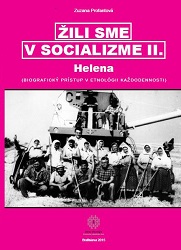
Problematike naratívnej každodennosti socializmu sme sa začali venovať v grantovom tíme pri príležitosti 15. výročia Nežnej revolúcie. V roku 2004 zorganizoval Ústav etnológie SAV v spolupráci s Ústavom pamäti národa medzinárodnú interdisciplinárnu konferenciu Malé dejiny veľkých udalostí v Česko(a) Slovensku po roku 1948, 1968, 1989, kde sme sa zamerali na aktuálne a mnohé dovtedy tabuizované témy vedeckého výskumu spoločnosti v období totality (dávam prednosť slovu socializmus). Výstupom konferencie bola publikácia s rovnakým názvom Malé dejiny veľkých udalostí v Česko(a) Slovensku po roku 1948, 1968, 1989. L, 11. (Profantová, ed. 2004), a tiež anglicky dopracovaná verzia Small History of Great Events in Czechoslovakia after 1948, 1968 and 1989 (Profantová, ed. 2006). V publikácii sme prevažne metódou oral history a ďalšími kvalitatívnymi metódami poukázali na mnohé problémy minulosti, ale aj transformujúcej sa spoločnosti.
More...
The main corpus of the study represents a source study of pHermitage 1115, containing the text, which describes the encounter and the discourse of an Egyptian man with a deity. The text is considered in a dialogue with the texts of the epoch, i.e. the principle is followed that in order to understand an ancient text, one has to study all the other ones that are accessible. The uniqueness of the presented papyrus lies in the fact that it contains the most ancient evidence of prayer and of sacrifice, committed without the mediation of priests and is the most ancient story, describing a meeting of a man with a deity, without the human deserting his body. As compared to other religious texts, mentioning similar encounters in the process of the transformation into the hereafter, in pHermitage 1115 the Egyptian crosses the south-eastern boundary of the inhabited world and finds himself in the realm of the deity. Traditionally, the text is considered to be the most ancient specimen of adventure literature, but a careful analysis discloses, that it is an esoteric text, which describes mechanisms for trespassing the Worlds, throws light on the nature of the deity and its world, and guides the human beings by instructing them as to how to conduct themselves under such extraordinary situations. And most importantly, the papyrus reveals the image of Egypt such as it appears in the eyes of the Egyptian and of the deity.
More...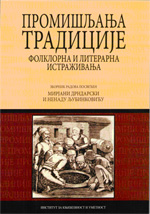
This paper provides a cross-section of the scientific interests of Nenad Ljubinković. Particular attention is paid to the polemical elements in the opus of this author. His polemical moments are viewed as essentially constructive, due to the fact that, from a polemic, as if from some kind of focal point, there arises a succession of texts of a theoretical bent, from which one can read the author’s concept of folklore and folklore studies, in a nutshell, the poetics of oral culture. We analyse the specific features of Ljubinković’s contextual approach to studying folklore and point out the stylistic characteristics of his polemically intoned texts (I-statements, contamination of stylistic registers, methods of decanonisation and dethronisation of authority). Our analysis of Ljubinković’s studies of oral epic poetry reveals the modernity of this author, in view of the fact that he raises a number of exceptionally complex and topical issues (the issues of the second-degree ideologisation of folklore, acceptance of history as a social construct).
More...
Even though it seems that the recurrent image of drinking wine is one of those constants that are neutral in terms of the sujet, it encompasses a number of structural factors (chronotope, hero, metrical organisation, the context of improvisation, etc.). Being very flexible, this formula can be found in all positions in the “text“, and it supports the meaning of numerous situations that are stylised in accordance with the rules of oral epic poetry, lyrical and lyrical-epic genres. A stable minimum model manifests a broad spectrum of meanings, along with activating the pagan and Christian layers of our heritage, the ethnographic basis, the reality of the collective and reminiscences of the historical past. In this paper, we follow the functions and meanings of the formula of drinking and serving wine that are connected with the poetics of oral forms andvarious models (initiation of the bridegroom; a slandered hero; refilling a glass; self-praise and realisation of a plan; unfaithful relatives, etc.). Most frequently found in the initial position of a “text“, the formula also gets shifted towards other syntagmatic levels, whereby its semantic and sujet-related potential is increased (from a reflex of a ritual act to complications essential for the development of the sujet and the characterisation of the protagonists, from initiation of the horizon of expectation and emotional involvement of the reader, through making a point, to parody). The manifold functions and possibilities of its application are adjusted to the symbolic values of wine, the genre rules and the circumstances of realising the variants.
More...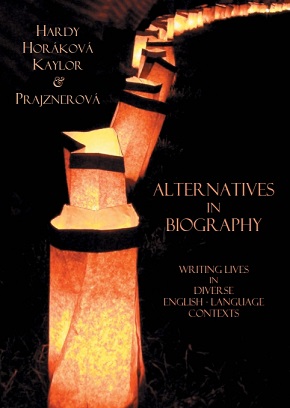
In Kim Scott’s novel Benang: From the Heart (1999), the narrator Harley—“the first white man born” and a product of his white grandfather’s personal eugenicist project—attempts to write down, in a subversive and rebellious gesture, “the most local of histories,” in order to articulate alternative perspectives on both Indigenous and non-Indigenous identity and belonging. In this “counter-project,” Harley must not only trace his Indigenous family lineage and their stories, but he must also learn to listen to and negotiate these stories. Gradually his endeavour comes to be characterized by what Lisa Slater, in her critical essay on Benang, calls “an ethics of uncertainty,” pointing to Harley’s, and by extension to Scott’s, preoccupation with cultural dislocation—a sense of not belonging fully to either culture—and the ways this can be reflected in his writing style, language, genre and frame. Harley, the indeterminate and uncertain narrator in Slater’s terms, can be read, I would suggest, as an archetypal Indigenous life chronicler, an embodiment of the position occupied by many contemporary Australian Indigenous storytellers/writers who use the genre of life writing to re-create their stolen identities while exposing and “writing back” to the (post)colonial narratives of the settler nation.
More...
Limnos, like many parts of Greece, experienced successive and long periods of foreign domination, traumas of war and economic devastation. During the decades of 1950’s - 1970’s, compounded by social and economic instability, many Limnian islanders arrived as young immigrants to Australia looking to build a ‘normal’ life. In this paper, through oral history case studies, I examine how the first and subsequent generations of migrants engage with concepts of home and belonging and the role of ethno-regionalism in the reconstruction and redefinition of identity in the diaspora. Ethno-regional identity, of interest in this research, remains both durable and significant as it reforms on foreign soil though it has received comparatively little academic attention. Identity formation and reformation and the role of ‘return’ visits to the ancestral home emerge as transnational patterns that lead to a rediscovered identity shaping the next generation. This ‘history from below’ is not only about the potential loss of Australian migration historiography, but also the legacy of the oral narrative that links the past with the lives and memories of the present and future descendants galvanising this community’s continuity.
More...
April to June every year, Rwandans commemorate the 1994 genocide. Extensive oral historical narratives are brought to life. Under the Aegis Trust for the prevention of genocide and crimes against humanity, stories are re-enacted and shared. Narratives of memories are seen as instruments to heal historical trauma. Rwanda has since moved from ravages of the genocide to political and economic stability. Although, Rwanda records a history of ethnic killings and near genocide from 1950s, it is the 1994 genocide that rocked its fabric of peace. Des Forges (2007) argues the genocide was not an outburst of uncontrolled rage of ethnic hatred, but a discontent to historical grievances and widening economic disparities between the Hutu elites and Rwandan poor. To suppress dissent, state and militia extremists planned and orchestrated the genocide. After the genocide, an International Criminal Tribunal for Rwanda (ICTR) was set up to try suspects. It was supplemented with Gacaca courts - a modified traditional conflict resolution system. In this paper, I aim to analyse oral history as a qualitative methodology. The narratives archived on video recount how Rwandans heal the genocide trauma through remembering. According to Moyer (1993) oral history involves a systematic gathering of testimonies of people who have experienced a significant event. It is not based on non-factual information, rather on verifiable facts that can be analyzed and placed in accurate historical contexts. This paper will adapt an oral historical narrative analysis of video testimonies from the Aegis Trust.
More...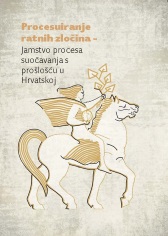
Knjiga Procesuiranje ratnih zločina - jamstvo procesa suočavanja s prošlošću nastala je s namjerom sumiranja osnovnih tokova u sferi pravne prakse koja se odnosi na procesuiranje ratnih zločina počinjenih na području bivše Jugoslavije u ratnim sukobima 90-ih. Brojnost i težina koja se očitovala analizom počinjenih ratnih zločina ukazuje na njihovu sustavnost i upućuje na zaključak da su počinjeni ratni zločini vrlo često imali podršku viših instanci, tzv. političkih elita. S obzirom na izgled današnje geopolitičke karte regije, neizbježno nam se nameće zaključak da je krajnji ratni cilj bio stvaranje etnički homogenih političkih zajednica i da je provođenje etničkog čišćenja, kao ratne strategije, bilo za to prikladna metoda. Nijekanje te očite činjenice, unatoč svim saznanjima koja danas imamo o zločinima koji su se u ratu 90-ih dogodili, počevši od zatvaranja u logore i ubojstava pa do deložacija i raznih drugih oblika kršenja ljudskih prava, nanosi golemu štetu novonastalim zajednicama. Breme onoga što se događalo 90-ih, osobito odbijanje suočavanja s tim, plodno je tlo za perpetuiranje potisnutih frustracija za koje se ne može sa sigurnošću predvidjeti koji smjer u određenom trenutku mogu uzeti, a ‘’put k održivom miru’’ i dalje ostaje u području imaginacije. Proces suočavanja s prošlošću nužno mora teći na više razina istodobno. Temelj njegove provedbe stvaranje je zakonskih preduvjeta za procesuiranje zločina koji su se dogodili i osiguranje standardizirane primjene ustanovljenih zakona. Ne samo da su takvi postupci činjenično teški i pravno kompleksni nego su i izrazito politički osjetljivi, no jedino je na taj način moguće individualizirati kaznenu odgovornost, dati temeljni doprinos otkrivanju istine o ratnim događajima i različitim oblicima kršenja ljudskih prava te postići pravdu za žrtve. Nasuprot tome, pravosuđa u zemljama sljednicama SFRJ nisu se pokazala doraslima situaciji koja je nastupila nakon ratnih sukoba. Njihove su reakcije bile spore i neadekvatne, a procesuiranje ratnih zločina vrlo se često onemogućavalo i opstruiralo zahvaljujući političkim pritiscima pa mnogi počinitelji ratnih zločina i danas mirno hodaju ulicama diljem zemlje, pritom katkad susrećući svoje žrtve. Iako se u javnosti počela nazirati ideja da čin ratnog zločina zahtijeva nedvojbenu moralnu osudu, ta misao u društvu još nije zaživjela. Rasap društvenih vrijednosti koji je nastupio, uz ostale elemente i uzroke koje u sebi nosi, uključuje i problematiku odnosa prema nasljeđu iz 90-ih. Još uvijek ostaje pitanje zašto je tako teško prepoznati i razumjeti da je zločin zločin, a žrtva žrtva. Ovom smo knjigom nastojali dati svoj doprinos procesu suočavanja s prošlošću i razrješenju društvene napetosti koju odbijanje suočavanja s počinjenim greškama i vlastitom odgovornošću nosi te predočiti čitateljstvu i javnosti što se sve od osamostaljenja Hrvatske činilo kako bismo živjeli u zemlji u kojoj postoji vladavina prava i u kojoj su svi državljani pred zakonom jednaki.
More...
Željko Obradović rođen je 1967. u Donjem Lapcu. Uspostavom ‘’SAO Krajine’’ bio je mobiliziran u krajinsku vojsku. U svibnju ‘95 su ga zbog kritiziranja srpskih političkih lidera uhitile krajinske vlasti pa je 22 dana zatvoren u zatvoru u Frkašiću. Nakon VRA Oluja s obitelji je otišao u izbjeglištvo u Srbiju. Iz Srbije je pokušavao s obitelji otići u ‘’treće zemlje’’, no kako nije uspio, 1999. odlučio je vratiti se u Hrvatsku. Nakon rata aktivirao se u lokalnoj politici kao član SDSS-a. Danas živi s obitelji u Donjem Lapcu i zauzima se za prava srpske nacionalne manjine.
More...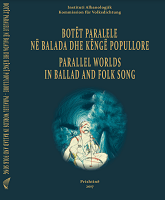
Both literally and figuratively, war has always been an arena for encounters with the otherworld. From the interventions of the gods in the Trojan War to the Angels of Mons in the 1916, the mythology of conflict has offered resolution in the shape of alternative realities. As if war is too materialist, it must be endowed with magic. This might be from outside (the Angels of Mons) or through the appeal to internal anxieties implied by the famous question 'What did you do in the Great War, Daddy?' This paper examines the ways in which contemporary songs explored alternative representations of the First World War, asserted a critical consciousness of the paradoxes and ironies involved, and also, in many cases, asked whose interests the War served. The study is based on a huge international initiative to gather oral and written narratives from all the countries taking part in the 1914-18 War. It takes examples of songs from both ‘sides’ in a war in which the ideologies of each were, in fact, remarkably similar.
More...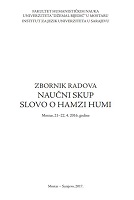
Oral-prose forms as parts of the structure in the novel Grozdanin kikot by Hamza Humo have been analyzed in this work. The focus of the analysis is to abstract the oral tradition and reveal its function in the novelistic structure.
More...
Štúdia skúma metódou mikrohistorickým pohľadom holokaust v moravských obciach Svatobořice a Strážnice. Premeny lokality „Baráky“ vo Svatobořicicích ako i rozprávanie preživšej Ruth Felixovej o jej živote sú odrazom „veľkých dejín“ 20. storočia. Štúdia čerpá informácie k obom miestam z orálnych prameňov uložených v archíve svedectiev Visual History Archive (Univerzity v južnej Kalifornii). Prezentácia z terénneho výskumu sa týka lokality Baráky (Svatobořice – Mistřín), bývalej rómskej osady pri Svatobořicích, synagógy a židovského cintorína v Strážnici a domu Ruth Felixovej na Bzeneckej ulici.
More...
My jsme ze Slovenska, máma pocházela z Hrabušic v okrese Spišská Nová Ves, táta kousek odvedle. Byla jsem malá, když jsme se přestěhovali do Ostravy, měla jsem rok, takže nevím, jak to tam vypadá, byla jsem tam jednou. To jsme byli malí, máma nás tam vzala a od té doby jsem tam už nebyla. Už tolik roků. A neláká mě tam jet. Já jsem jako děcko tam na Slovensko chodit nechtěla, protože máma mluvila, že to tam bylo děs a hrůza. Romové kradli, neměli kde brát, dávku jim pozastavili, museli krást v obchodech, na polích. Brambory, zelí, takový ty věci.
More...
After the end of the Second World War, Slovak Roma became part of the Czech Republic’s industrial and construction business development by migrating to Czech cities for work. This part of modern Czech history is neither thoroughly covered by historians and biographic researchers, nor known to the lay public. The project Memory of Roma Workers aims at filling that gap through the participative collection of interviews with Slo vak Roma witnesses in co operation with their descendants, and subsequently displaying the stories in a street exhibition and archiving the interviews in the Czech Museum of Roma Culture. Over the course of the work, it has become apparent that the life stories of most of the witnesses represent suitable material for self reliant publication. Thus, the collection of nine male and seven female interviews has been edited into the form of stylized life story narratives. The witnesses come from the industrial region of Ostrava and the city of Brno, and they range in the year of birth from 1933 to 1966. The stories of two married couples are presented as well. The narratives include elements of Czech language local dialects, as well as the expression of the Roma Czech ethnolect. The length as well as the narrative style has been edited in order to express the dramaturgic focal point of each life story as accented by the narrators themselves; nevertheless, the author openly confesses to performing conceptual work with the narratives.
More...
Există mai multe feluri de „administratori” ai memoriei unui loc : unii sunt istoricii înșiși; alții, interesați de lucrările celor dintâi, văd istoria din cărți prelungită prin istoria pe care memoria lor sau a generațiilor anterioare, cunoscute de ei, le-a livrat-o ca memorie familială (spre exemplu : George Vaida sau Oscar Schwartz). Sunt apoi scriitorii care, trăind sau trecând printr-un loc, consemnează impresii, se identifică prin apartenența la un spațiu, îl invocă, îl ridică la rang de reper ficțional al unei mitologii personale, al unei geografii spirituale. Sunt apoi muzeografii, arhitecții, istoricii artei, care administrează și selectează un patrimoniu, atașându-i un discurs prin care își definesc selecția care și face parte la rândul său din memoria trăită a unui loc.
More...
Timiș, Temes, Temesch, -oara, -var, -burgh... Temesh, Thames, temz... Ne-am întâlnit la Capri într-o seară, nu știam cine sunt, cine ești... chiar dacă pe-atunci cântam „căprii”, pentru că nu știam de insula Capri, restul se potrivește și acum. Nu pot semna, nu mă pot identifica, și de aceea mă întorc din nou pe Strada Privighetorii, care nu se numește nici ea așa acum și nici n-am văzut vreodată pe o plăcută că s-ar fi numit așa, și nici n-am auzit vreodată cântând privighetori acolo. Dar ce frumos suna: „Veniți, privighetoarea cântă și liliacul e-nflorit”, în nopți de mai, cu liliacul lila sub fereastră, la fel de frumos suna și Rondelul privighetoarei între roze de autorul, chiar dacă nu bănățean, al Rondelului dezastrului mondial... „State noi se-nființează,/ Prăbușit e câte-un tron.../ Moartea-și plimbă monoton/ Coasa ei ce vieți retează./ Nori se bat la orizon.” în scris, pe plăcuța ei, strada are un nume eroic, al cuiva care a murit, pentru mine doar într-un titlu de poem, pentru că eu nu știu istorie.
More...

